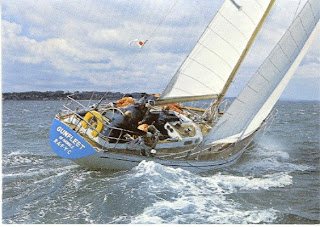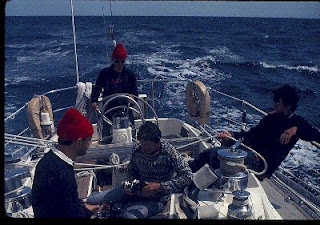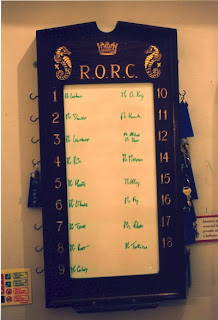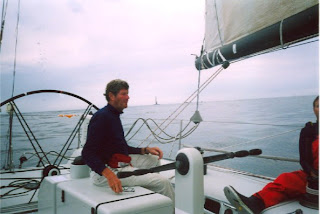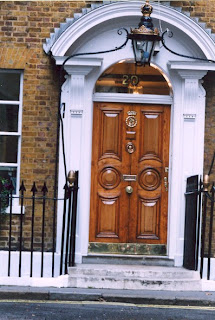 No club has been more important in my sailing career than the Royal Ocean Racing Club. I joined in 1969; shortly after finishing the Fastnet race and having won the Admiral’s Cup, sailing aboard “Carina”. One of the conditions of membership is to have completed a number of the Club’s races offshore. A true yacht club. I live in the United States, however I have completed 4 Admiral’s Cups, and 5 Fastnet races as well as many of the Clubs other races. I try to stay in touch with events at the RORC.
No club has been more important in my sailing career than the Royal Ocean Racing Club. I joined in 1969; shortly after finishing the Fastnet race and having won the Admiral’s Cup, sailing aboard “Carina”. One of the conditions of membership is to have completed a number of the Club’s races offshore. A true yacht club. I live in the United States, however I have completed 4 Admiral’s Cups, and 5 Fastnet races as well as many of the Clubs other races. I try to stay in touch with events at the RORC.
Category: rorc
Admiral’s Cup 1971
 Following our delivery across the ocean “Carina” was hauled out of the water at Camper & Nicholson’s yard in Gosport. it made sense because the first race, the Channel race started at Southend closeby. The team was comprised of “Yankee Girl”, “Bay Bea”, and “Carina” Bill Snaith, however was chosen to be the team captain, in Cowes without a boat.
Following our delivery across the ocean “Carina” was hauled out of the water at Camper & Nicholson’s yard in Gosport. it made sense because the first race, the Channel race started at Southend closeby. The team was comprised of “Yankee Girl”, “Bay Bea”, and “Carina” Bill Snaith, however was chosen to be the team captain, in Cowes without a boat.
Fastnet 2003

 This was my fifth Fastnet Race,(My first was in 1969) I have a fondness for this race; the challenges of the tide gates, the weather, the changes and obstacles.The fireworks the night before, the charm and bustle of Cowes, contribute to this feeling.
This was my fifth Fastnet Race,(My first was in 1969) I have a fondness for this race; the challenges of the tide gates, the weather, the changes and obstacles.The fireworks the night before, the charm and bustle of Cowes, contribute to this feeling.
1973 continued
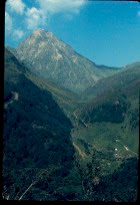
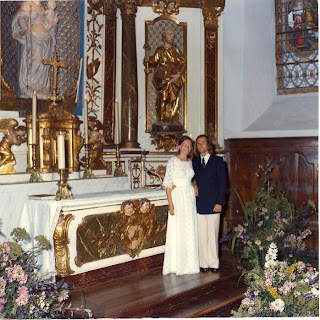 I eluded to the breath of events for 1973, My wedding was one whose date was a established after consulting the sailing schedule. With Admiral’s Cup and the Fastnet behind me I could concentrate on my future wife. We were married in Aste, a small village in the Pyrenees mountains, which separate France from Spain.
I eluded to the breath of events for 1973, My wedding was one whose date was a established after consulting the sailing schedule. With Admiral’s Cup and the Fastnet behind me I could concentrate on my future wife. We were married in Aste, a small village in the Pyrenees mountains, which separate France from Spain.
Fall 1975
 Following Cowes Week aboard “Gitana VI” I raced the Fastnet with “Guia” belonging to Georgio Falk. “Guia” had been built for the previous Admiral’s Cup as “Ginko” a 44 foot Bob Miller/Ben Lexan design. A light fast boat, having scored well in 1973 and had won an inshore race in 1975. Again, a mixed crew of talented Italians and French, and again English was the language on Deck, except when faced with a crisis.
Following Cowes Week aboard “Gitana VI” I raced the Fastnet with “Guia” belonging to Georgio Falk. “Guia” had been built for the previous Admiral’s Cup as “Ginko” a 44 foot Bob Miller/Ben Lexan design. A light fast boat, having scored well in 1973 and had won an inshore race in 1975. Again, a mixed crew of talented Italians and French, and again English was the language on Deck, except when faced with a crisis.

1974-1975 England
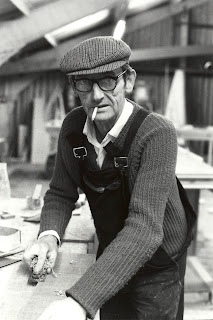 In the fall of 1974, We moved to the Isle of Wight, England, where I started work at Souter’s Shipyard, lofting and buildiing cold-moulded boats. The face at the right is of a by-gone era. I skippered a boat, the prototype of the Swan 41, called “Gunfleet of Hamble”, We were vying for a spot on the English Admiral’s Cup team. We practiced, the selection trials were fiercely competitive. Going into the final 200 mile race, we were tied for third with Yeoman, Robin Aisher’s boat. All we had to do was beat them and we were in. we could effectively ignore the other boats. The owner, got nervous and changed three of the crew, who had helped us get here, and listened to an “expert” weather consultant, claiming there would be light air all weekend. we left our heavy air sails ashore along with our steady crew. We did not make the cut.
In the fall of 1974, We moved to the Isle of Wight, England, where I started work at Souter’s Shipyard, lofting and buildiing cold-moulded boats. The face at the right is of a by-gone era. I skippered a boat, the prototype of the Swan 41, called “Gunfleet of Hamble”, We were vying for a spot on the English Admiral’s Cup team. We practiced, the selection trials were fiercely competitive. Going into the final 200 mile race, we were tied for third with Yeoman, Robin Aisher’s boat. All we had to do was beat them and we were in. we could effectively ignore the other boats. The owner, got nervous and changed three of the crew, who had helped us get here, and listened to an “expert” weather consultant, claiming there would be light air all weekend. we left our heavy air sails ashore along with our steady crew. We did not make the cut.
